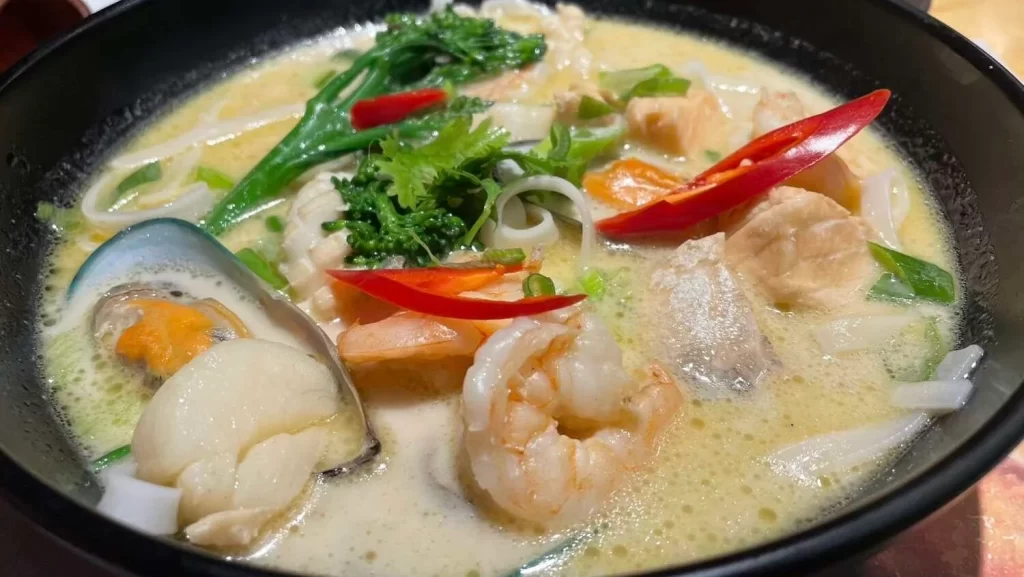Wagamama dishes are usual and unusual. That is the starting point of something that intrigued me for a long while. Japanese influences in Wagamama food looms large but it is not that Japanese if that makes sense. Thai and not Thai.
What do you say about a food outlet that mentions kimchee, miso soup, katsu, pad thai, lemongrass, flat rice noodles etc in its menu description? Certainly Asian.
Check the current (2024) UK menu here to get an idea. Do note that menu is country specific.
I had my first taste of Wagamama in London, its birthplace, circa 2012 but can’t recall the exact location. It was underwhelming. It was not the food. I cannot even remember what I had.
I did not like canteen like shared bench style seating. The staff writing my order on menu sheet cum paper placemat on the table. Confirming an order is fine but writing it down on the mat did not add up. That left me with little sense of Wagamama food. Hence the reason I could not recall what I ate.
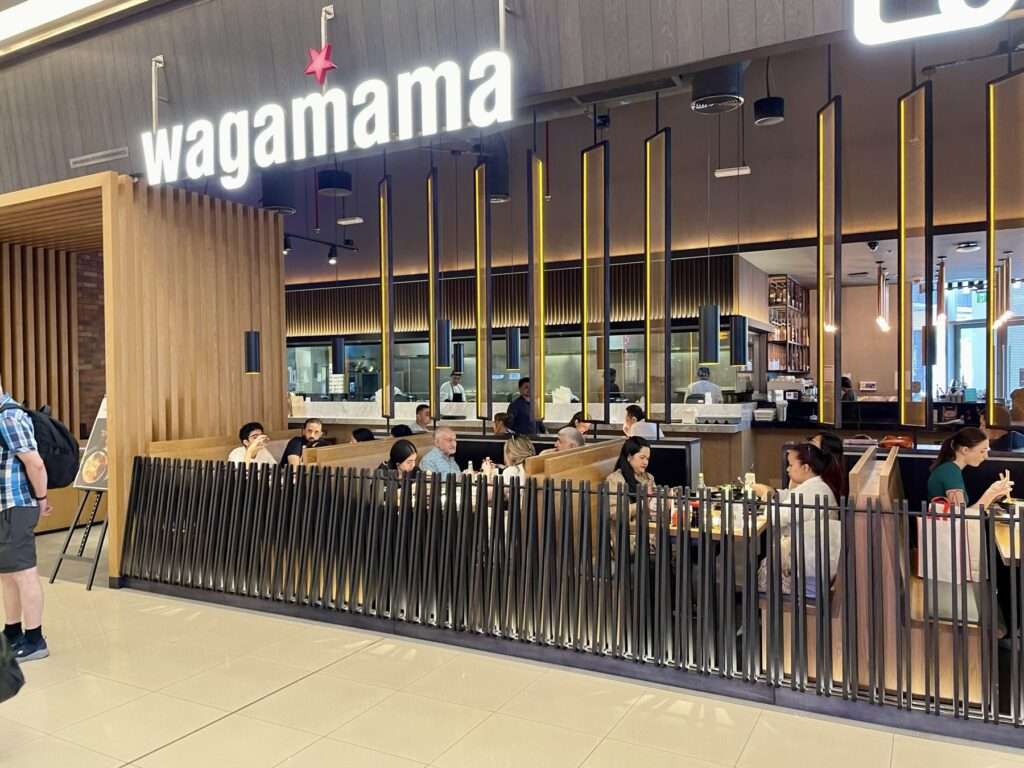
It also felt rushed, more suited for fast food but they were not fast food. I knew it was casual dining. That experience put me off the place for 12 years.
12 years later I re-discovered Wagamama during my holiday travels to the Middle East.
While staying at a nearby hotel and I would pass this particular Wagamama outlet a few times. It always had good patronage and seemed to cut across the age spectrum, families and couples.
I looked at the menu at the front desk and was suitably impressed by the presentation images and descriptions of the dishes. I decided to return for dinner with a guest. Always good to hear from someone who has not been in the place before.
Heritage but not the original
Certainly not authentic heritage cuisine which is easily recognisable. However they were clearly using original spices and ingredients which was very much traditional. So there was heritage but the end result was different and unexpectedly very good.
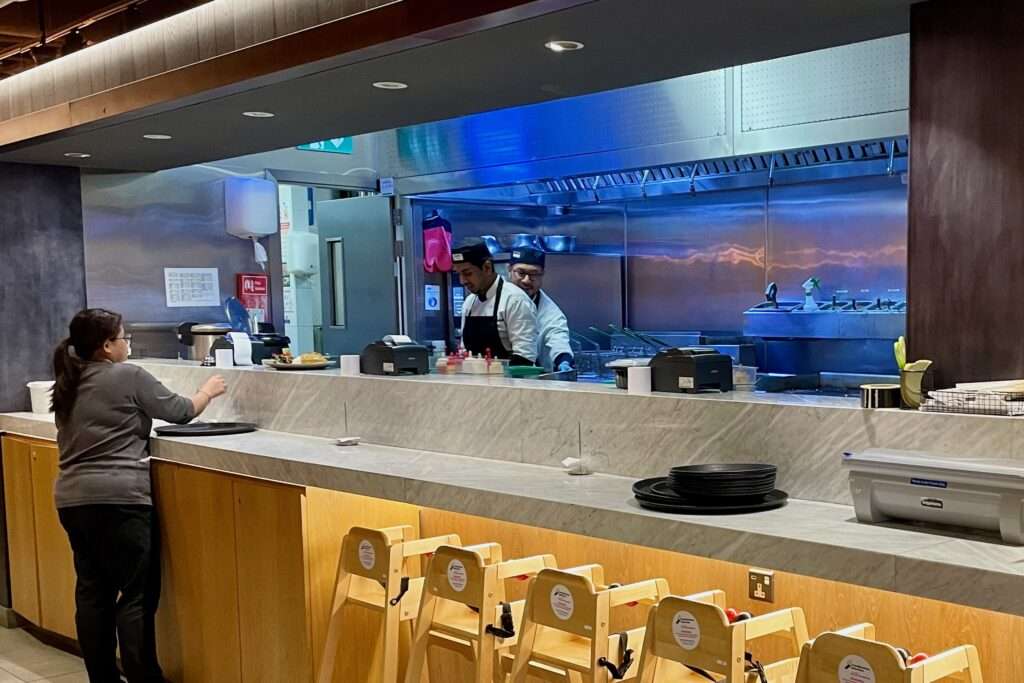
It was also true to the taste of South East Asia and the Far East. A surprise indeed. Despite the very recognisable taste, scent as well as texture, the dishes are new.
It also does not fall in the fusion food category and no attempt to present it as a pretentious culinary work of art, a small portion on a huge plate.
It actually retains similar structure to the original dishes that influenced Wagamama dishes.
Its beginning
Bit of research shows that it was created by Alan Yau, a British national in Bloomsbury, London in 1992. Yau migrated from Hong Kong, aged 13 with his family. Went on to create among others, two Michelin starred restaurants, the World famous Hakkasan and Yauatcha. Clearly we are dealing with a proven talent.
Yau is a serial entrepreneur in the real sense of the term. Creates, accomplishes a standard before selling it off and moves to create another special thing. The Michelin starred restaurants were sold off after they got their award. A desire not to just start something new, but to aim for a higher note.
So it is not a surprise based on its creator, it continues to do well in the casual dining space. My guess is that the menu is not typical, so the take-up would be slow and the more conservative of patrons might not consider it.

Yet it now operates 190 restaurants, 130 in the UK and across other major cities around the World.
It has been sold at least three times over increased valuation to capital funds and corporate entities, who stuck with the mould but allowed fine tuning of recipes.
Sadly it exited Australia and New Zealand in 2014 and 2019. In Australia after a 12 year run. I suspect both countries are closer to South East and Far East Asia where ethnic food from the region are everywhere.
They probably think it is not following the right recipes, not realising they developed a separate and interesting line of dishes. All with the same regional influences.
My guess it will return to our region and make a positive impact.
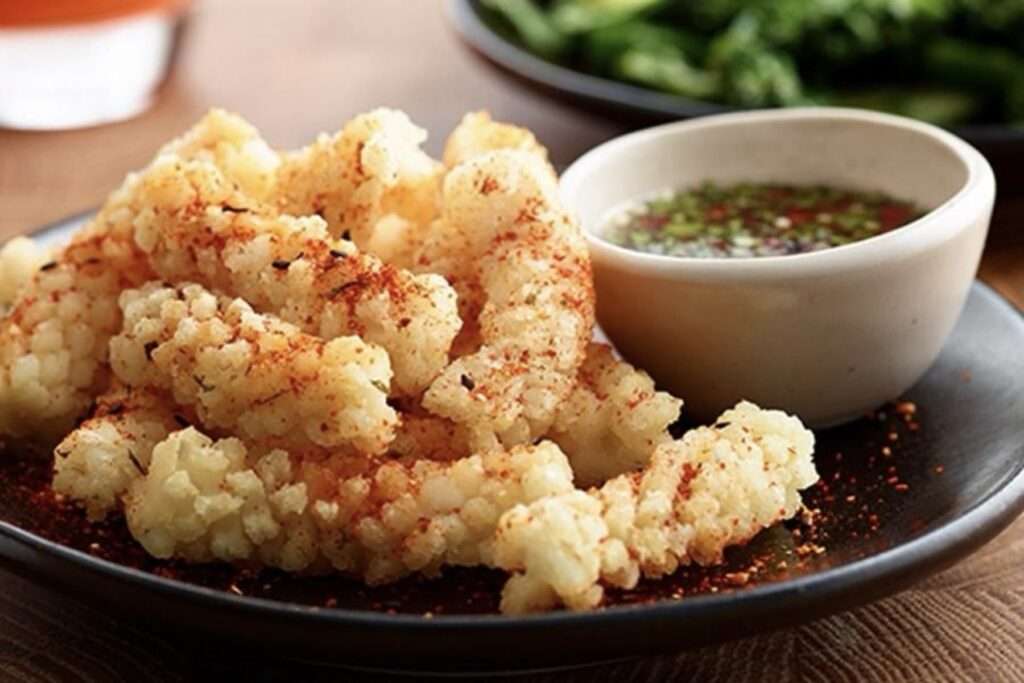
Now for the food
If you have been eating food from the Thailand, China, Korea and Japan, you would recognise the dishes but with a difference. Tasting would also present the same sense – familiar but different. But more importantly they do taste good and are filling. It is also soulful – you feel satiated with a nice warm feeling.
Central to it is the Japanese ramen and the Japanese-like presentation style. Do read my post on Food Japan Nuances and the other post on Food Culture Japan. Presentation is taken seriously and Wagamama has followed that.
Though Ramen is central, any thought that it is Japanese centric is quickly extinguished when you see other dishes. Consider their Coconut Seafood Broth and the vegan dish Tochigi Yellow Tofu Curry.
My favourite is Coconut Seafood Broth. A heady mix of shrimp, salmon, scallops, squid, mussels with broccoli. Chillies and flat wide noodles poached in coconut milk broth.
First taste brings you to the familiar territory of Singapore Laksa, Thai tanginess and flat rice noodles from Southern China.
Absolutely nothing from Japan but rich mix of South East Asia Chinese diaspora influences of that region. Yes, familiar but wholly different.

I had a guest from Eastern Europe who was not into spicy food or chillies but liked Sushi and nearly all things Japanese. So it was an easy sell to go to Wagaimama because of the Japanese food influences.
She was bowled over the Coconut Seafood Broth which was not Japanese or Far East but closer to South East Asia. She has since been introducing her friends and family to it. Now she is keen to try any and all things Asians.
Vegan range
No idea if vegan meals were part of its founding but it has a fair, well prepared and presented vegan range. Not the usual salad variation approach you find in many restaurants including in 5 star hotels.
There are about 6 to 8 vegan dishes and they are not variations of one or two similar dishes.
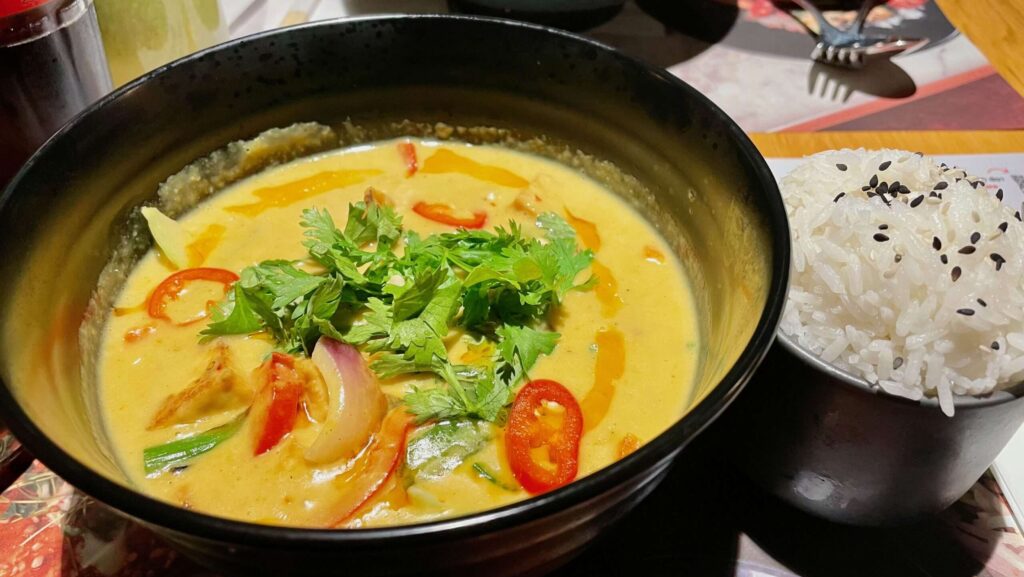
The Tochigi Yellow Tofu Curry caught my eye and the description was mind boggling sumptuous – “fragrant coconut, lemongrass + turmeric soup. tofu. red peppers. spring onions, bok choi and red onions. garnished with chili, coriander, chilli oil. served with a side of white rice, brown rice or rice noodles with sesame seeds”.
Recommendation
If you are unfamiliar to the taste of South East Asia and the Far East, bring along someone who is . Wagamama food range is wide and might appear daunting. Or better still to get the menu online prior to visit and carefully go thru it. Google for unfamiliar items. Aim for the unusual.
As the title says, Wagamama food, its a journey.
